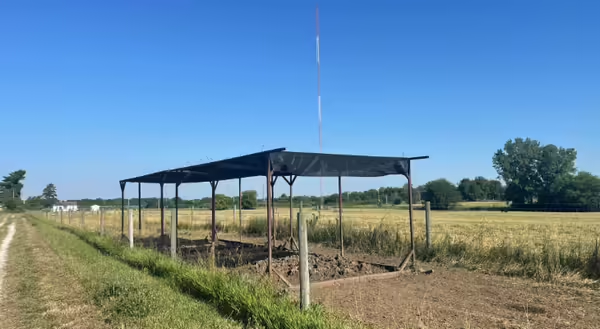
To shade, or to not shade, that is the question. Providing shade can be a bit of a hot topic among cattlemen. No matter what side of the argument you’re on, there are gains and losses in both situations. If you’re considering whether or not to provide shade, looking at the advantages and disadvantages can assist in making an informed decision.
Advantages
Providing shade for cattle has advantages, especially when it comes to reducing the effects of heat stress. During the summer or during prolonged heat spells, cattle with shade have shown significantly less issues related to heat exposure. Research published by the University of Kentucky Extension shows that shaded cattle have been found to have a weight-gain advantage over non-shaded cattle. The same article referenced a study where cattle provided with shade had decreased illness and reproduction issues. Cows showed increased conception rates, and Bulls had increased semen quality. Milk production also increased when cattle had access to shade. Decreased respiratory illness, increased fertility rates, and more consistent cycling are all potential benefits from providing shade. (Reference list cited at the end of the article)
Disadvantages
When offered shade, cattle tend to congregate under shaded structures for extended periods of time. Spotty overgrazing is one of the main issues that stems from this. Cattle will selectively graze around the shaded area, eating the forage down too far. Eventually, cattle will graze the regrowth, which disturbs the growing pattern of the grass. Erosion from constant movement in one area can also contribute to the destruction of pastures. As cattle congregate in one place, their manure does too. A buildup of manure provides a prime breeding ground for flies and other pests. Sometimes, cattle become unwilling to move from the shade, which can reduce feed intake and decrease average daily gain. Depending on the type of shaded structure used, airflow can also be compromised. A lack of airflow can contribute to heat stress issues within a herd. If not enough shade is provided, animals can result to fighting over space. This creates negative stress for those lower in the dominance hierarchy. The Ohio BEEF Cattle Letter suggests 40 to 60 square feet per cow.
Types of Shade
There are three popular types of shade that can be provided to cattle. Natural structures like trees and bushes are most often pre-existing in pastures. Portable shade structures are also an option. Frames for these structures are typically made from steel or metal pipes with a shade cloth stretched over the top. These structures are relatively easy to move, which can be beneficial if you utilize rotational grazing. Even the most durable portable shade structures can be damaged by consistent heavy winds. Sheds and barns are considered permanent shade. This is the most expensive type of shade, but weather damage isn’t often a concern. Carefully consider the pros and cons specific to your operation before deciding which option might be best for your cattle.
Breed and Season
The hide color and breed of the cattle also impacts the need for shade. If cattle are Bos Indicus or Brahman influenced, they are better equipped to handle hot weather. Black hided and show-bred stock have an increased need for shade. The summer season is when the need for shade is the highest. When cattle are grazing in the early spring, late fall, or winter, lack of shade isn’t necessarily concerning. If cattle were not raised on your operation, it’s important to acknowledge the environment they came from. Cattle coming up from the South are likely better equipped to handle heat than those that come down from the North. Cattle from cooler environments might require more assistance, like shade, when it comes to battling the heat.
Summary
Shade provides advantages in both weight gain and reproductive benefit. A lack of shade can improve the grass health of pastures and reduce manure buildup. If you’re interested in providing shade, exploring all potential options can help you to make an informed decision. Overall, shade or no shade, cattle will always find ways to be productive.
About the Author
Mabry Bruhn is a student at the University of Illinois Urbana-Champaign who works in beef production, research, and producer outreach as a University of Illinois Extension intern in the I-BELIEF program through the Department of Animal Sciences in the College of Agricultural, Consumer and Environmental Sciences. This article has been reviewed by Extension Commercial Agriculture Educator, Travis Meteer.
Resources
Smith. (2006, July 26). Is shade necessary for cattle? | Ohio BEEF Cattle Letter. https://u.osu.edu/beef/2006/07/26/is-shade-necessary-for-cattle/
Higgins, S. F., Agouridis, C. T., Wightman, S. J., & Cooperative Extension Service. (n.d.). Shade options for grazing cattle. In Cooperative Extension Service [Report]. https://publications.ca.uky.edu/sites/publications.ca.uky.edu/files/aen99.pdf